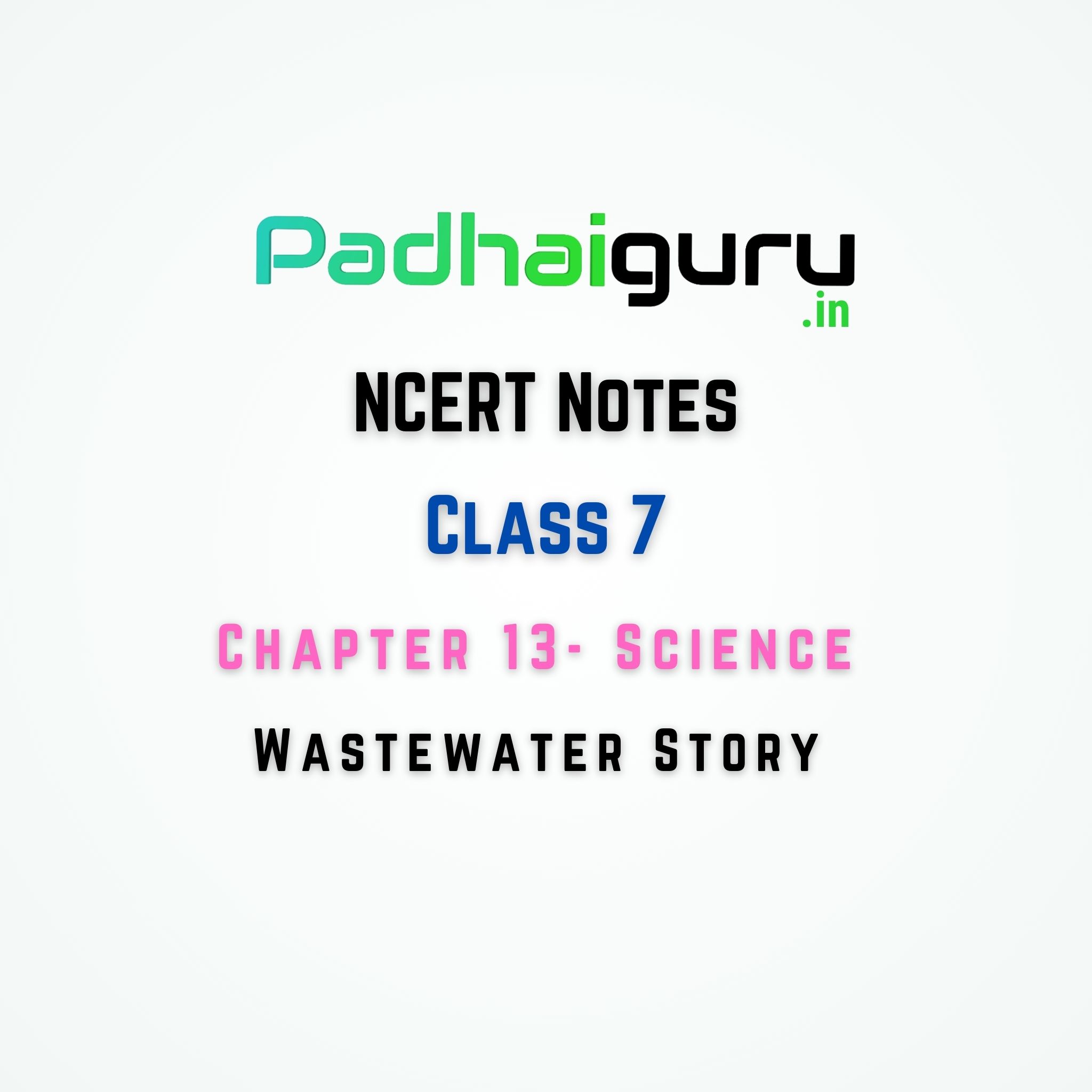13. Wastewater Story Class 7 Science NCERT Notes for Chapter 13 CBSE

Welcome to Wastewater Story Class 7 Science NCERT Notes for Chapter 13 CBSE
Chapter 13: Wastewater Story
13.1 Water, Our Lifeline
- Clean water is essential for human beings. Let us make a mindmap of the many uses of clean water.
- More than one billion people lack access to safe drinking water. This accounts for a large number of water-related diseases and even deaths.
- The increasing scarcity of fresh water due to population growth, pollution, and industrial development has led to the urgency of the situation.
- On 22 March 2005, the General Assembly of the United Nations proclaimed the period 2005–2015 as the International Decade for action on “Water for life”. All efforts made during this decade aim to reduce by half the number of people who do not have access to safe drinking water.
- There has been perceptible progress in the direction of the aim but still there is a lot to achieve.
13.2 What is Sewage?
- Sewage is wastewater released by homes, industries, hospitals, offices, and other users. It also includes rainwater that has run down the street during a storm or heavy rain.
- Sewage contains suspended solids, organic and inorganic impurities, nutrients, bacteria, and other microbes.
13.3 Water Freshens Up — An Eventful Journey
- Water distribution and wastewater removal systems use pipes and sewerage. Manholes are located at junctions and change in directions.
13.4 Wastewater Treatment Plant (WWTP)
- Wastewater treatment involves physical, chemical, and biological processes.
- Bar screens remove large objects.
- Grit and sand removal tank separates sand and pebbles.
- Clarification tank allows solids to settle.
- Aeration promotes growth of aerobic bacteria.
- Sludge formation and removal.
- Disinfection with chemicals before release.
13.5 Better Housekeeping Practices
- Cooking oil and fats should not be thrown down the drain.
- Proper disposal of waste materials to avoid clogging drains.
13.6 Sanitation and Disease
- Poor sanitation and contaminated water can lead to diseases like cholera, typhoid, and dysentery.
13.7 Alternative Arrangement for Sewage Disposal
- Low-cost onsite sewage disposal systems like septic tanks, chemical toilets, and composting pits.
13.8 Sanitation at Public Places
- Proper disposal of waste in public places to maintain hygiene and prevent diseases.
Keywords and Definitions
Important Definitions for Wastewater Story Class 7 Science NCERT Notes for Chapter 13 CBSE
- Aeration: The process of adding air or oxygen to wastewater to promote the growth of aerobic bacteria.
- Clarification Tank: A tank in a wastewater treatment plant where solids settle at the bottom.
- Sludge: The solid material that settles at the bottom of wastewater during treatment.
- Chlorination: The process of disinfecting water with chlorine to make it safe for release.
- Bar Screens: Devices used to remove large objects from wastewater.
- Grit and Sand Removal Tank: A tank that separates sand, grit, and pebbles from wastewater.
- Mindmap: A visual representation of ideas and concepts.
- Waterborne Diseases: Diseases caused by the ingestion of contaminated water.
- Screen: A device used to separate solids from wastewater.
- International Decade for Water: A United Nations initiative aimed at improving access to safe drinking water.
Frequently Asked Questions (FAQs)
Important Questions for Wastewater Story Class 7 Science NCERT Notes for Chapter 13 CBSE
Q1: What is sewage?
A1: Sewage is wastewater released by homes, industries, hospitals, offices, and other users. It also includes rainwater during storms.
Q2: Why is clean water important?
A2: Clean water is essential for human beings. Lack of access to safe drinking water can lead to water-related diseases.
Q3: What is the International Decade for action on “Water for life”?
A3: It was proclaimed by the General Assembly of the United Nations in 2005-2015 with the aim of providing access to safe drinking water to more people.
Q4: How does a wastewater treatment plant work?
A4: Wastewater treatment involves processes like screening, sedimentation, aeration, sludge removal, and disinfection to remove impurities from sewage.
Q5: What is the purpose of aeration in wastewater treatment?
A5: Aeration promotes the growth of aerobic bacteria, which consume unwanted matter in wastewater.
Q6: How can individuals contribute to sanitation?
A6: Individuals can practice good housekeeping, avoid throwing oil and fats down drains, and dispose of waste properly in public places.
Q7: What diseases can result from poor sanitation?
A7: Poor sanitation can lead to diseases such as cholera, typhoid, polio, and dysentery.
Q8: What are some alternative sewage disposal systems?
A8: Low-cost onsite sewage disposal systems include septic tanks, chemical toilets, and composting pits.
Q9: What are the steps involved in getting clarified water from wastewater?
A9: Steps include screening, sedimentation, aeration, sludge removal, and disinfection.
Q10: Why should chemicals like paints and solvents not be thrown down the drain?
A10: Such chemicals may kill the microbes that help purify water in wastewater treatment plants.
This was the end of Wastewater Story Class 7 Science NCERT Notes for Chapter 13 CBSE
For more information, refer to NCERT SOLUTIONS, NCERT NOTES, and NCERT BOOKS .
